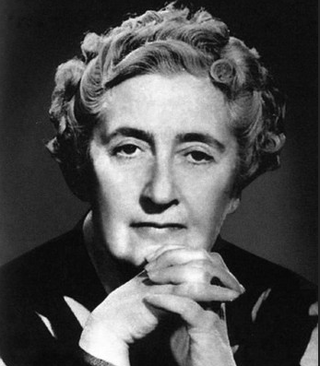
Dame Agatha Mary Clarissa Christie, Lady Mallowan, was an English writer known for her 66 detective novels and 14 short story collections, particularly those revolving around fictional detectives Hercule Poirot and Miss Marple. She also wrote the world's longest-running play, the murder mystery The Mousetrap, which has been performed in the West End since 1952. A writer during the "Golden Age of Detective Fiction", Christie has been called the "Queen of Crime". She also wrote six novels under the pseudonym Mary Westmacott. In 1971, she was made a Dame (DBE) by Queen Elizabeth II for her contributions to literature. Guinness World Records lists Christie as the best-selling fiction writer of all time, her novels having sold more than two billion copies.
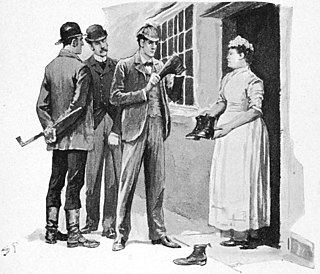
Detective fiction is a subgenre of crime fiction and mystery fiction in which an investigator or a detective—whether professional, amateur or retired—investigates a crime, often murder. The detective genre began around the same time as speculative fiction and other genre fiction in the mid-nineteenth century and has remained extremely popular, particularly in novels. Some of the most famous heroes of detective fiction include C. Auguste Dupin, Sherlock Holmes, and Hercule Poirot. Juvenile stories featuring The Hardy Boys, Nancy Drew, and The Boxcar Children have also remained in print for several decades.

Crime fiction, detective story, murder mystery, mystery novel, and police novel are terms used to describe narratives that centre on criminal acts and especially on the investigation, either by an amateur or a professional detective, of a crime, often a murder. It is usually distinguished from mainstream fiction and other genres such as historical fiction or science fiction, but the boundaries are indistinct. Crime fiction has multiple subgenres, including detective fiction, courtroom drama, hard-boiled fiction, and legal thrillers. Most crime drama focuses on crime investigation and does not feature the courtroom. Suspense and mystery are key elements that are nearly ubiquitous to the genre.
Ariadne Oliver is a fictional character in the novels of Agatha Christie. She is a mystery novelist and a friend of Hercule Poirot.

Minette Caroline Mary Walters DL is an English crime writer.

The Golden Age of Detective Fiction was an era of classic murder mystery novels of similar patterns and styles, predominantly in the 1920s and 1930s.
Natsuo Kirino is the pen name of Mariko Hashioka, a Japanese novelist and a leading figure in the recent boom of female writers of Japanese detective fiction.
Kinn Hamilton McIntosh, known professionally as Catherine Aird, is an English novelist. She is the author of more than twenty crime fiction novels and several collections of short stories. Her witty, literate, and deftly plotted novels straddle the "cozy" and "police procedural" genres and are somewhat similar in flavour to those of Martha Grimes, Caroline Graham, M C Beaton, Margaret Yorke, and Pauline Bell. She was inducted into the prestigious Detection Club in 1981, and is a recipient of the 2015 Cartier Diamond Dagger award.
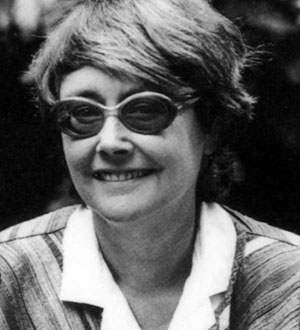
Sarah Caudwell was the pseudonym of Sarah Cockburn, a British barrister and author of detective stories. Her series of four murder stories written between 1980 and 1999 centered on a group of young barristers practicing in Lincoln's Inn, narrated by a Hilary Tamar, a professor of medieval law whose gender is never specified, who fills the role of detective.
Keigo Higashino is a Japanese author chiefly known for his mystery novels. He served as the 13th President of Mystery Writers of Japan from 2009 to 2013. Higashino has won major Japanese awards for his books, almost twenty of which have been turned into films and TV series.

Kerry Isabelle Greenwood is an Australian author and lawyer. She has written many plays and books, most notably a string of historical detective novels centred on the character of Phryne Fisher, which was adapted as the popular television series Miss Fisher's Murder Mysteries. She writes mysteries, science-fiction, historical fiction, children's stories, and plays. Greenwood earned the Australian women's crime fiction Davitt Award in 2002 for her young adult novel The Three-Pronged Dagger.
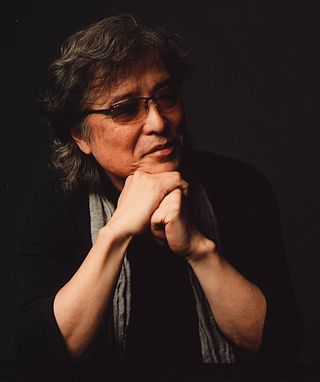
Soji Shimada is a Japanese mystery writer. Born in Fukuyama City, Hiroshima Prefecture, Japan.
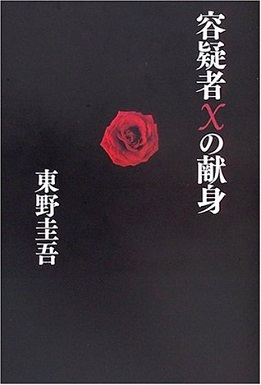
The Devotion of Suspect X is a 2005 novel by Keigo Higashino, the third in his Detective Galileo series and is his most acclaimed work thus far. The novel won him numerous awards, including the 134th Naoki Prize, which is a highly regarded award in Japan. The novel also won the 6th Honkaku Mystery Award, which is one of the most prestigious awards in the mystery novels category in Japan. 2006 Honkaku Mystery Best 10 and Kono Mystery ga Sugoi! 2006, annual mystery fiction guide books published in Japan, ranked the novel as the number one.
The Honkaku Mystery Awards are presented every year by the Honkaku Mystery Writers Club of Japan. They honor the best in honkaku mystery fiction and critical works published in the previous year.

Naoyuki Uchida, who writes under his pen name Yukito Ayatsuji, is a Japanese writer of mystery and horror. He is one of the founders of Honkaku Mystery Writers Club of Japan and one of the representative writers of the new traditionalist movement in Japanese mystery writing. His wife is Fuyumi Ono, a Japanese fantasy and horror writer who is known for her fantasy series The Twelve Kingdoms.
Kanae Minato is a Japanese writer of crime fiction and thrillers. She is a member of the Mystery Writers of Japan and the Honkaku Mystery Writers Club of Japan. She is a 2015 recipient of the Alex Awards.
Nanae Kumagai, known by her pen name Riku Onda, is a Japanese writer. Onda has won the Yoshikawa Eiji Prize for New Writers, the Japan Booksellers' Award, the Mystery Writers of Japan Award for Best Novel, the Yamamoto Shūgorō Prize, and the Naoki Prize. Her work has been adapted for film and television.
Stuart Turton is an English author and journalist. His first novel, The Seven Deaths of Evelyn Hardcastle (2018) was a bestseller internationally and won a number of awards including the First Novel Award at the 2018 Costa Book Awards. His books have sold over one million copies in the US and UK.
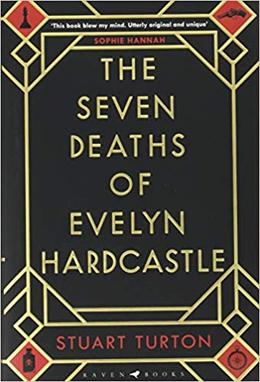
The Seven Deaths of Evelyn Hardcastle is a novel by Stuart Turton which won the Best First Novel prize in the 2018 Costa Book Awards and reached number one on TheSaturday Times Bestseller list and number five on The Sunday Times Bestseller list.

The Word Is Murder is a 2017 mystery novel by British author Anthony Horowitz and the first novel in the Hawthorne and Horowitz series. The story focuses on solving the murder of a woman who was involved in a hit-and-run accident ten years previously.














